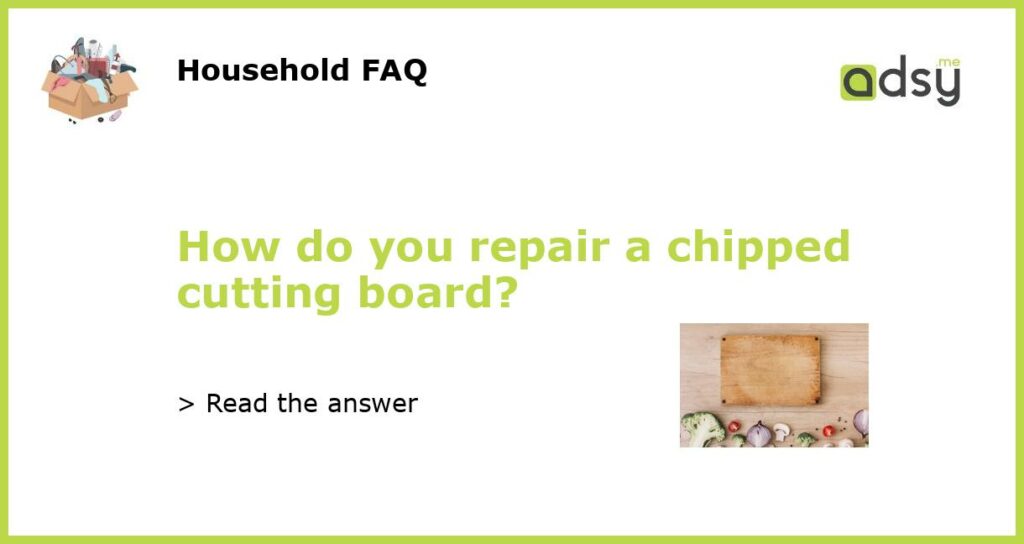Understanding the issue: What causes a chipped cutting board?
A cutting board is an essential kitchen tool, used daily for preparing meals. However, constant usage often results in chips and scratches on the surface, which can diminish the usability of the board. There are several reasons why a cutting board may chip over time, including the use of sharp knives, exposure to extreme temperatures, and prolonged exposure to water or moisture. In order to repair a chipped cutting board, it’s important to first understand the cause of the damage in order to prevent it from recurring in the future.
Assessing the damage: How severe is the chip?
The severity of the damage to the cutting board will determine the appropriate method of repairing it. A small chip or scratch can often be smoothed out with sandpaper or a sharpening stone. However, if the chip is more significant, it may require a larger repair job, such as filling in the damaged area with epoxy or replacing the entire board. It’s important to assess the damage before attempting any repairs, to avoid causing further damage to the cutting board.
Sanding and smoothing the surface: How to repair a small chip
For smaller chips or scratches, sanding or smoothing out the surface with a sharpening stone may be all that is needed. Start by sanding the area lightly, using a fine grit sandpaper. Gradually increase the pressure and number of passes until the surface is smooth. If you are using a sharpening stone, use a circular or figure-eight motion to smooth out the surface, being careful to avoid creating any new scratches. Once the surface is smooth, rinse it with water and dry it thoroughly before using the cutting board again.
Filling in the chip: How to repair a larger chip
If the chip in your cutting board is too large to be smoothed out with sandpaper or a sharpening stone, you may need to fill in the damaged area with epoxy. Begin by cleaning the surface of the board and allowing it to dry completely. Then, mix equal parts of epoxy resin and hardener and apply it to the chipped area using a putty knife or spatula. Smooth out the surface of the epoxy and allow it to dry according to the manufacturer’s instructions. Once the epoxy has cured, use sandpaper to smooth out the surface and rinse it thoroughly with water before using the cutting board again.
Preventing future chips: How to care for your cutting board
The best way to prevent chips and scratches from forming on your cutting board is to care for it properly. Always use a sharp knife when cutting on the board, as a dull knife will cause more damage. Avoid exposing the board to extreme temperatures, such as placing it in the oven or dishwasher. Instead, clean it with a mild detergent and warm water, and dry it thoroughly with a towel. Additionally, consider using separate cutting boards for different types of foods, such as one for meat and another for vegetables, to reduce the risk of cross-contamination.






